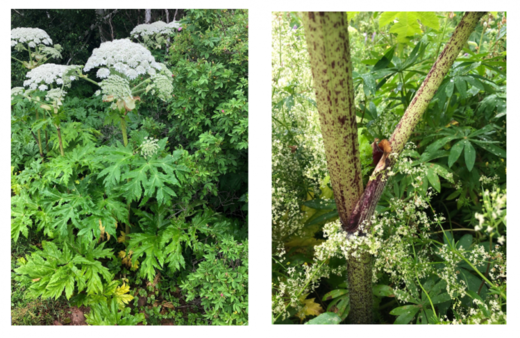This species can easily be confused with native cow parsnip. Giant hogweed spreads easily and can establish along roadsides, ditches, and streams. Giant hogweed has a thick bright green stem (3-8 cm in diameter) with dark reddish-purple spots and coarse white hairs at the base of the leaf stock. The plant can be 2-5.5 m tall with broad leaves that are deeply-lobed and serrated. From late spring to mid-summer, giant hogweed produces a large upside-down umbrella-shaped head, up to 80 cm across, with clusters of tiny white flowers.
Removing hogweed can be dangerous because of this sap; it should also not be burned or composted for this reason. The easiest way to remove giant hogweed is to pull it when it is still very young and small and store all plant components in sealed clear garbage bags until the plant is dried and seeds are no longer viable.
Disposing of invasive species; Place invasive plants in a clear plastic bag and secure them. Write plant name (or “invasive plant”) on the bag. Place in waste cart (you can also have up to 2 excess bags beside your cart) OR bring them to any Waste Watch Drop-Off Center and pay an applicable waste disposal fee.
If you believe you have giant hogweed growing on your property please contact: coordinator@peiinvasives.org

